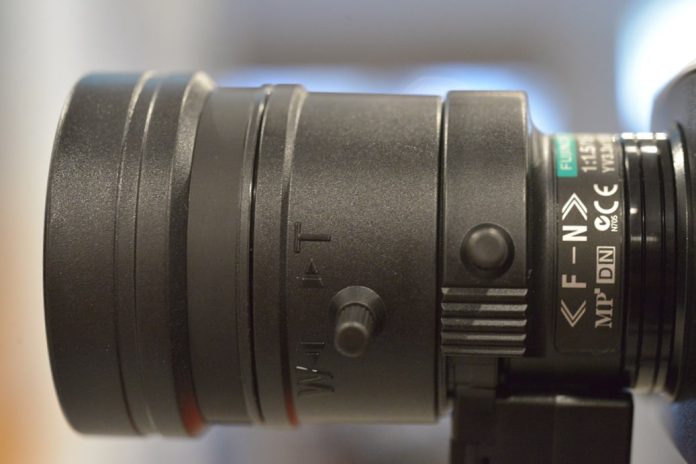Are good CCTV lenses for full body cameras always expensive, or can relatively cheap lenses still offer a quality alternative?
A: Generally speaking, good CCTV lenses are going to be more expensive. They’ll be made of glass, they’ll have coatings that resist internal reflection and they’ll have corrective internal lens equations. However, it is possible for a relatively low-cost lens to offer higher quality than its price might suggest. The types of low-cost lenses that might offer good performance will generally be simple with less complex elements and they will come from experienced makers, like Fujinon, the maker of the excellent 15-50mm lens pictured above.
If there was one thing that installers should think about with low-cost lenses, it’s coatings. We see CCTV lenses with no coatings at all and that’s a strange thing, given they are not all that expensive to apply. Good coatings reduce internal reflection, which cause ghosting and flare, softens contrast and reduce resolution. A lens without coatings, even a simple lens with 4 elements or so, is going to suffer from major issues. More complex lenses without coatings will be horrible.
Typically, an uncoated lens can lose 8 per cent of light per element – that means fewer elements and less complexity is better if you are stuck with uncoated lenses. Of course, good lenses have corrective elements which enhance resolution and reduce chromatic and spherical aberrations. In the old days (before Alexander Smakula invented lens coatings at Zeiss in 1935), few lenses would have been built with more than about 4 elements as the cost imposed on image contrast was too high.
Even relatively ordinary coatings reduce reflection by 80 per cent and collectively, allow transmission of more than 95 per cent of light through a lens. A single layer of low-cost coating will reduce reflection from 4 per cent to 1.5 per cent, while a decent multilayer coating will reduce reflection to around 0.2 per cent. When you’re holding a lens in your hand, tip it onto an angle to your eye and see if you notice a colour tint – green, purple, yellow, orange – that you don’t see looking directly through the lens. That’s the coating, the colour of which may influence your images with warmer or cooler hues.
So, you can see that lens designers face a balancing act. More elements make a better lens with greater resolution and fewer aberrations. But more elements mean greater need for coatings on each element, which adds to cost. Quality coatings of magnesium fluoride or Teflon must be applied by hard ion beam sputtering or advanced plasma reactive sputtering – processes that need to take place in a vacuum. Given the complexity of doing a good job of it, it’s no surprise some lens manufacturers take short cuts.
There’s no doubt that sometimes lens makers accidentally get it right and create gems. The hard thing will be finding out which low-cost lenses are high quality, with minimal CAs, less complex distortions, fewer ghosts and sharper resolution edge to edge. There are few if any reviews of low-end CCTV lenses, so trial and error is the only way. And if you find you have an uncoated lens that’s delivering poor image quality in stressful light conditions, think about applying a filter and/or a sunshade or hood – it will make a big difference.
#sen.news











